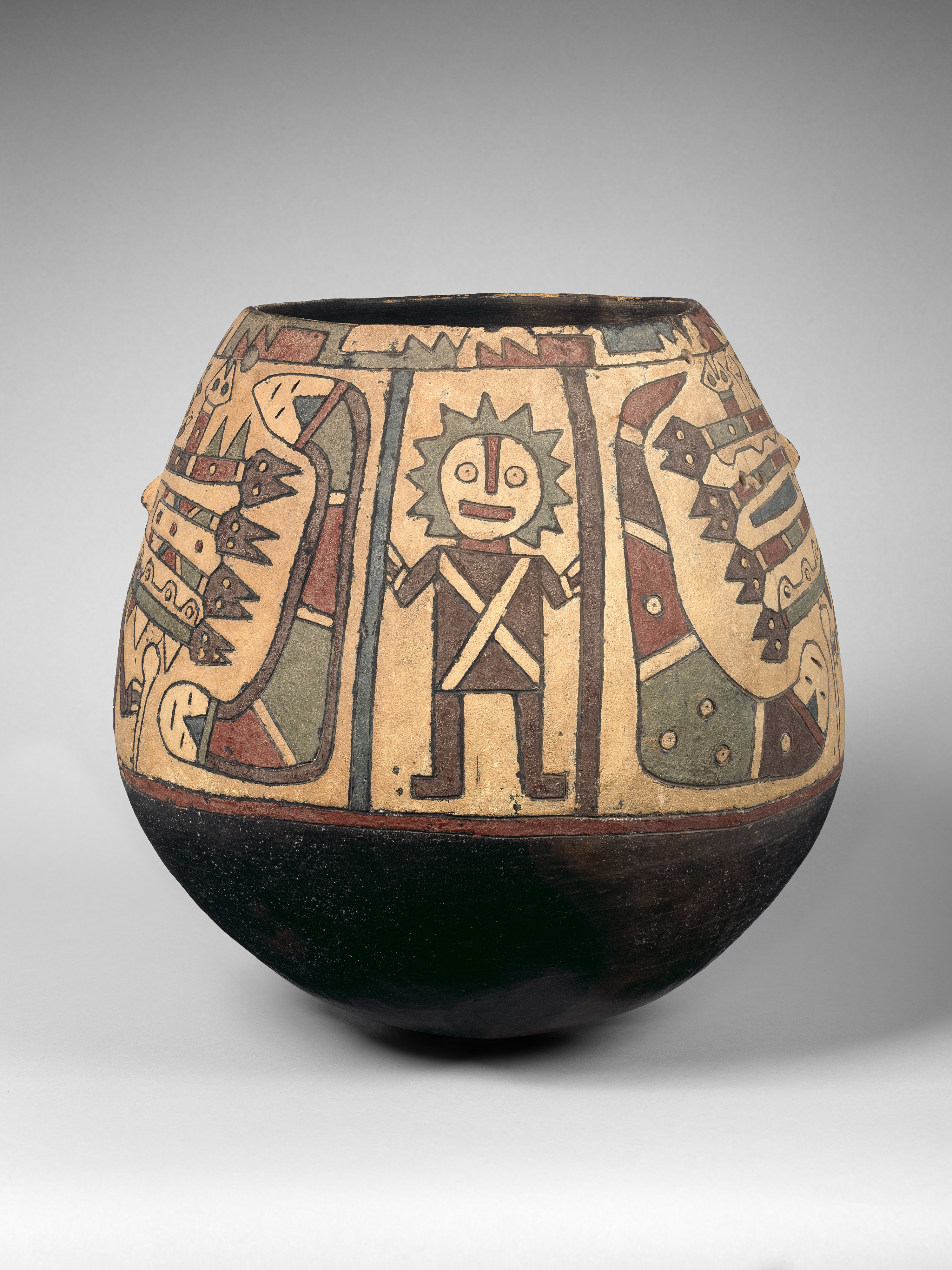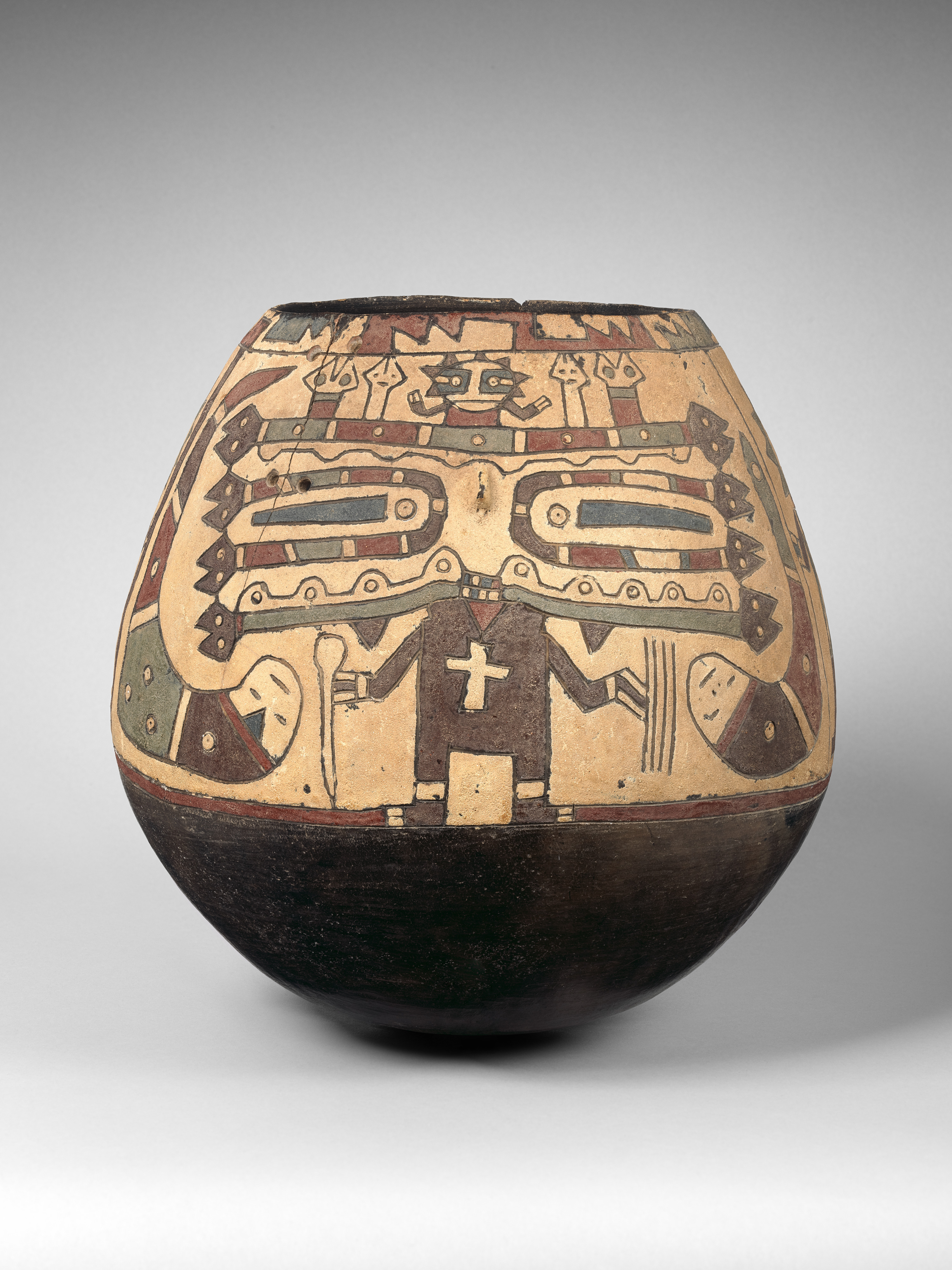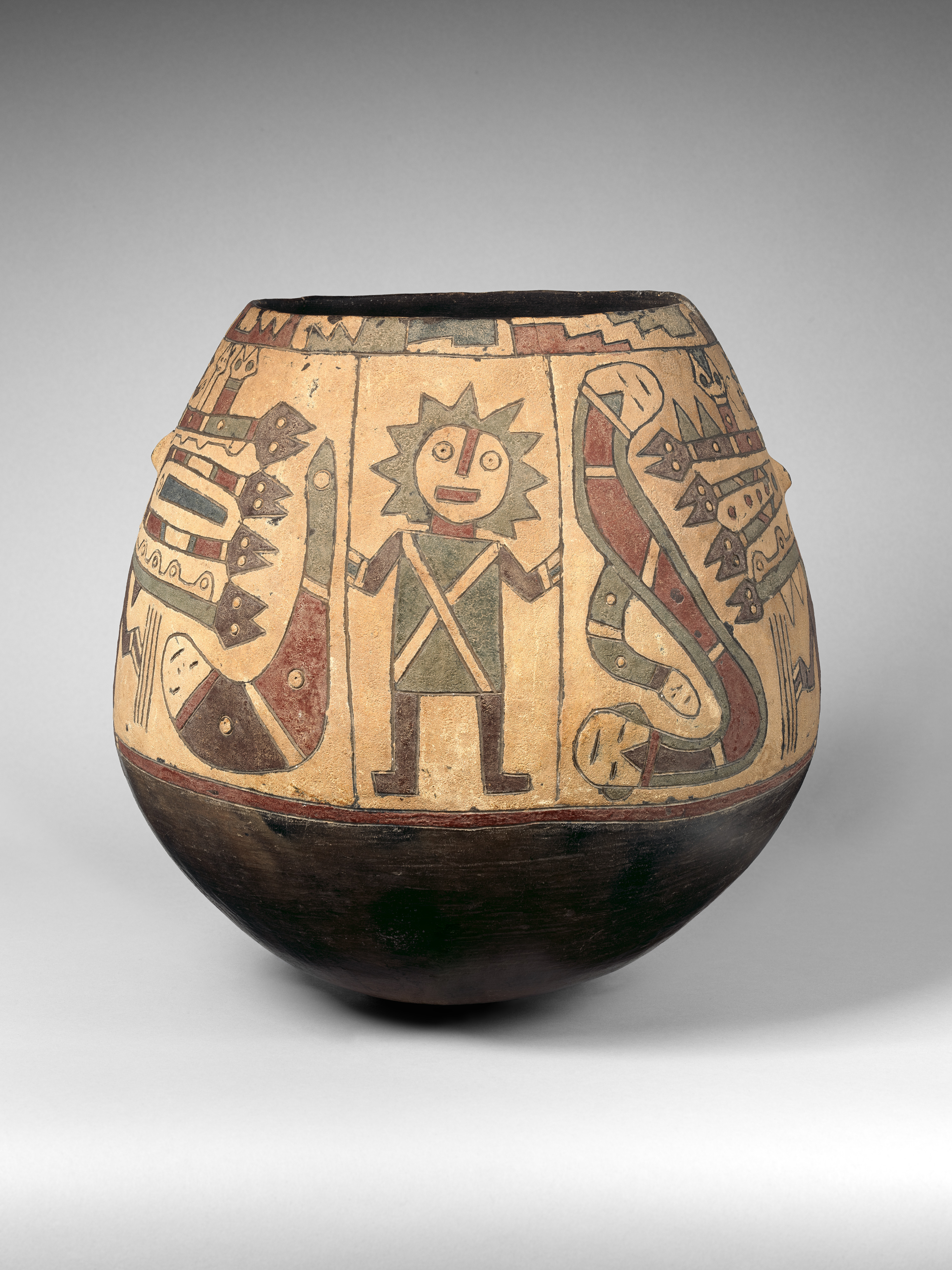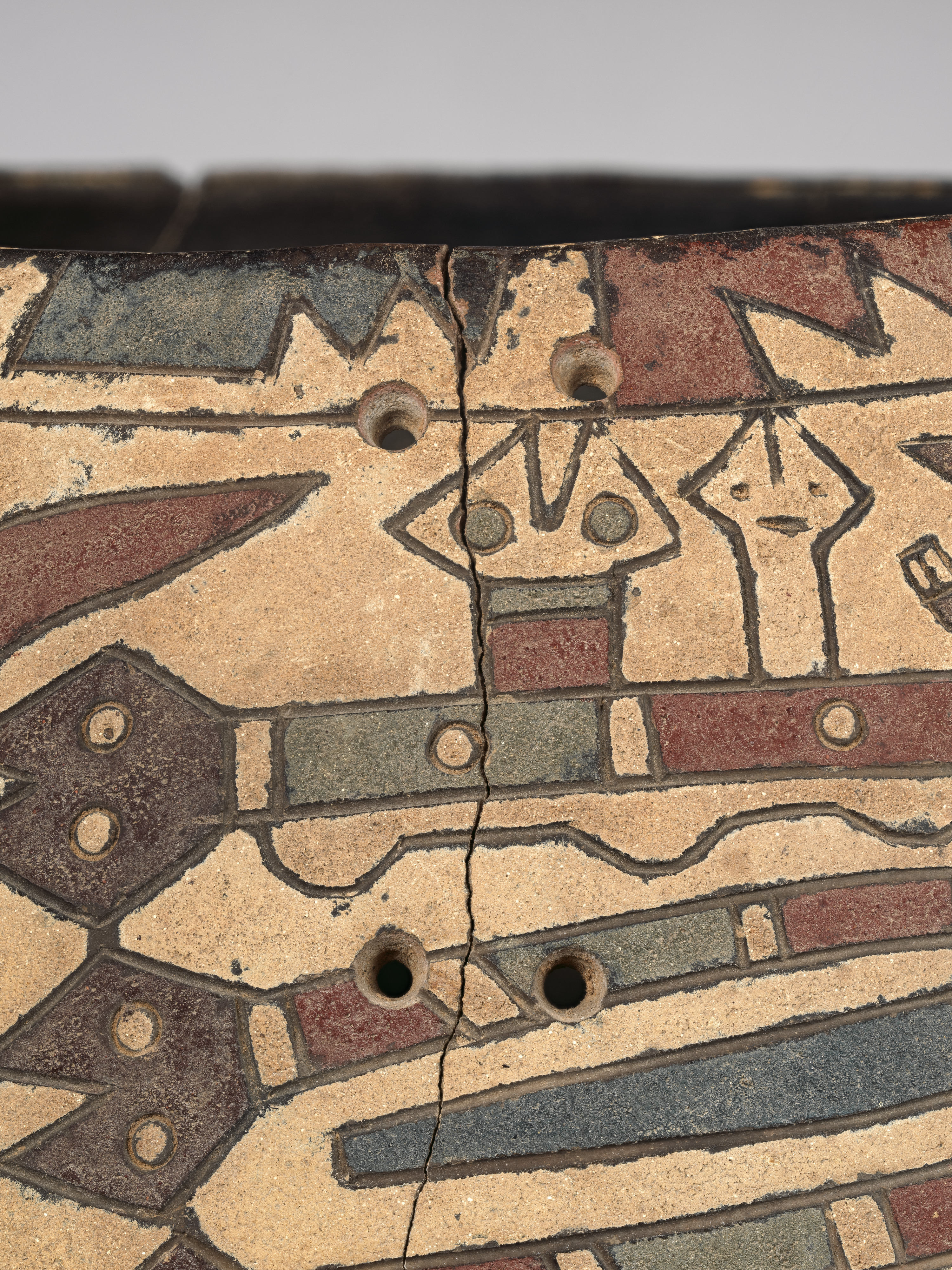Neckless jar with complex scene
Not on view
Neckless jars were a ubiquitous form in coastal Peru since the introduction of ceramics—around 1600 BCE—through the end of the first millennium BCE. Typically, these jars were crafted for cooking or storage, and rarely were they very decorated. This is one of these exceptional examples in the Paracas style, an artistic tradition widely adopted by South Coast communities between 800 BCE and 60 CE. In the upper half of this vessel, two pairs of holes were bored to fix—using cords—a vertical crack, indicating its use in other activities before its final deposition. This upper half—which would be the most visible part when set on the ground—is also profusely decorated with colorful designs and two sets of frontal figures are replicated with slight variations in design and color on opposite sides.
One pair is based on a frontal human figure with a serrated halo—or a rayed headdress—wearing garments of different colors—brown and bluish gray—with two bands crossing in the front forming an X-design. Each of these human figures stands between vertical lines of different thicknesses—maybe a door threshold or staves (Menzel et al. 1964: Fig. 48). The other pair of figures have human bodies, but their faces are hidden behind a complex design that seems to merge a nose ornament—that typically covers the mouth—with a frontal headdress—that covers the forehead—into a mask-like feature (compare with 33.149.75). Appendages ending in serpent heads project from the sides of the mask. On top, a small figure resembling in its pose and details the larger figures emerges between serpent heads. Each of these masked figures has their arms open holding what seem to be darts and a club and wears a different—in color and design—tunic and mask. The mouths are especially distinct, with one "smiling" and showing a single row of teeth, while the other smaller but displaying both upper and lower teeth. Elongated serpent-like bodies terminating in heads—whose closed eyes may suggest they are dead—were painted to the right and left of each masked figure.
The smiling face, the serpent-decorated headdress, and the circular eyes surrounded by a U-shaped serpent motif on these larger masked figures are similar to other Paracas images known as the Oculate Being (e.g., 63.232.93). This suggests that the larger figure in this neckless jar could be a late version of this popular Paracas image characterized by its big circular eyes. These images are also comparable to the decoration of cloth masks that once were part of mortuary bundles (Dawson 1979: Fig 10-11; see 2016.703). The Oculate Being and its variations must have been seen as visual representations of Paracas ancestors.
The Paracas ceramics are known for their vibrant colors. Combining mostly mineral pigments with a binding agent, Paracas artists created paints that were applied on the surface of the pottery after firing (Kriss et al. 2018). At a time when most ceramics in the Central Andes were of muted colors, the Paracas palette was a significant innovation. Paracas themes—such as the Oculate Being—were restricted to the South Coast of Peru.
Hugo C. Ikehara-Tsukayama, Senior Research Associate, Arts of the Ancient Americas, 2023
References and further reading
Carmichael, Patrick H. "Nasca Origins and Paracas Progenitors." Ñawpa Pacha, Journal of Andean Archaeology, vol. 36, no 2 (2016): 53-94.
Dawson, Lawrence. "Painted Cloth Mummy Masks of Ica, Peru," in The Junius B. Bird Pre-Columbian Textile Conference, edited by Ann P. Rowe, Elizabeth P. Benson, and Anne-Louise Schaffer, pp. 83–104. Washington, D.C.: Textile Museum and Dumbarton Oaks, 1979.
García, Rubén. "Puerto Nuevo y los orígenes de la tradición estilístico-religiosa Paracas." Boletín de Arqueología PUCP, no. 13 (2011): 187-207.
Ikehara-Tsukayama Hugo C., Dawn Kriss, and Joanne Pillsbury. "Containing the Divine: Ancient Peruvian Pots." Metropolitan Museum of Art Bulletin vol. 80, no 4 (Spring 2023).
Kriss, Dawn, et al. "A Material and Technical Study of Paracas Painted Ceramics." Antiquity vol. 92, no. 366 (2018): 1492-510.
Menzel, Dorothy, John H. Rowe, and Lawrence E. Dawson. The Paracas Pottery of Ica: A Study in Style and Time. The University of California Publications in American Archaeology and Ethnology, vol. 50. Berkeley and Los Angeles: The University of California Press, 1964
Unkel, Ingmar, Bernd Kromer, Markus Reindel, Lukas Wacker, and Günther Wagner. "A Chronology of the Pre-Columbian Paracas and Nasca Cultures in South Peru Based on AMS 14C Dating." Radiocarbon vol. 49, no. 2 (2007), pp. 551–64.
Due to rights restrictions, this image cannot be enlarged, viewed at full screen, or downloaded.
This artwork is meant to be viewed from right to left. Scroll left to view more.






